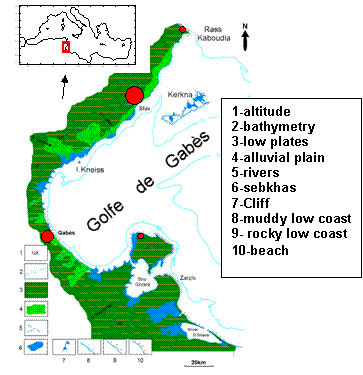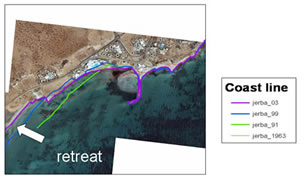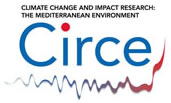Coastal case study: Gulf of Gabès, Tunisia
 |
| Map of the Gulf of Gabès (from MEDD/PNUD, 2007) |
 |
The Gulf of Gabès (Tunisia) is an extremely shallow basin that leaves it vulnerable to atmospheric warming. High tides, a characteristic of the region, facilitate ocean mixing and modulate sea-water temperatures, important for lagoon ecosystems. The gulf has extensive marine habitats and is highly biologically productive; as a consequence it is home to a fishing industry of national importance. However, the marine ecosystem faces threats on two fronts: industrial discharge, and atmospheric warming resulting in raised sea-water temperatures and changes in circulation. Any rise in sea level could invade several fragile Sebkhat salt lakes around the gulf. In addition, the region is primed for rapid expansion in tourism activities, but the low-lying coastline and islands such as Djerba, are extremely vulnerable to coastal erosion and inundation from even a moderate rise in sea level.
Documents
Gulf of Gabès information sheets:
 Observed climate
Observed climate Current impacts and vulnerability
Current impacts and vulnerability 'Future' climate and impacts
'Future' climate and impacts  Stakeholder engagement
Stakeholder engagement
Case-study indicators
Leading team:
This research is coordinated by Ali Harzallah, INSTM, Tunisia
 Integrating Case Studies
Integrating Case Studies